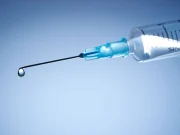Tag: VASC
Rituximab Not Superior to Conventional Strategy for Eosinophilic Granulomatosis With Polyangiitis
Rituximab no better than glucocorticoids alone for inducing remission in patients with eosinophilic granulomatosis with polyangiitis
Chronic Cannabis Smoking, THC Ingestion Linked to Endothelial Dysfunction
Inverse correlation seen for arterial flow mediated dilation with smoking frequency and amount of THC ingested
No Benefit Seen for Revascularization Added to Drug Therapy in Carotid Stenosis
Addition of revascularization to optimized medical therapy not beneficial in patients with carotid stenosis ≥50 percent and low or intermediate predicted stroke risk
Cold Hypersensitivity, Heavy Leg Sensation Tied to Risk for Varicose Veins
Presence of cold hypersensitivity and heavy legs together may increase risk sevenfold
Gynecological Disorders Can Increase Risk for Cardiovascular, Cerebrovascular Disease
Nonmalignant gynecological diseases associated with elevated risk for composite C/CVD
Increased Intermuscular Fat Linked to Coronary Microvascular Dysfunction
Independent link seen between decreased coronary flow reserve and decreased skeletal muscle, increased intermuscular adipose tissue
Tibolone, Oral Estrogen-Progestin Therapy Linked to Risk for Heart Disease
Risk for ischemic heart disease elevated for initiators of tibolone or oral estrogen-progestin therapy
Light Physical Activity Linked to Improved Vascular Parameters in RA
Sedentary behavior is negatively associated with baseline and peak brachial artery diameters, superficial femoral artery diameters
Knowledge of Abdominal Aortic Calcification Results Improves Some CVD Risk Factors
Findings show no impact on fruit, veggie intake, but some improvement in cholesterol levels and cardiovascular risk scores
Standing More During the Day Does Not Cut Cardiovascular Risk
In fact, standing more than two hours a day may be tied to higher risk for circulatory issues














